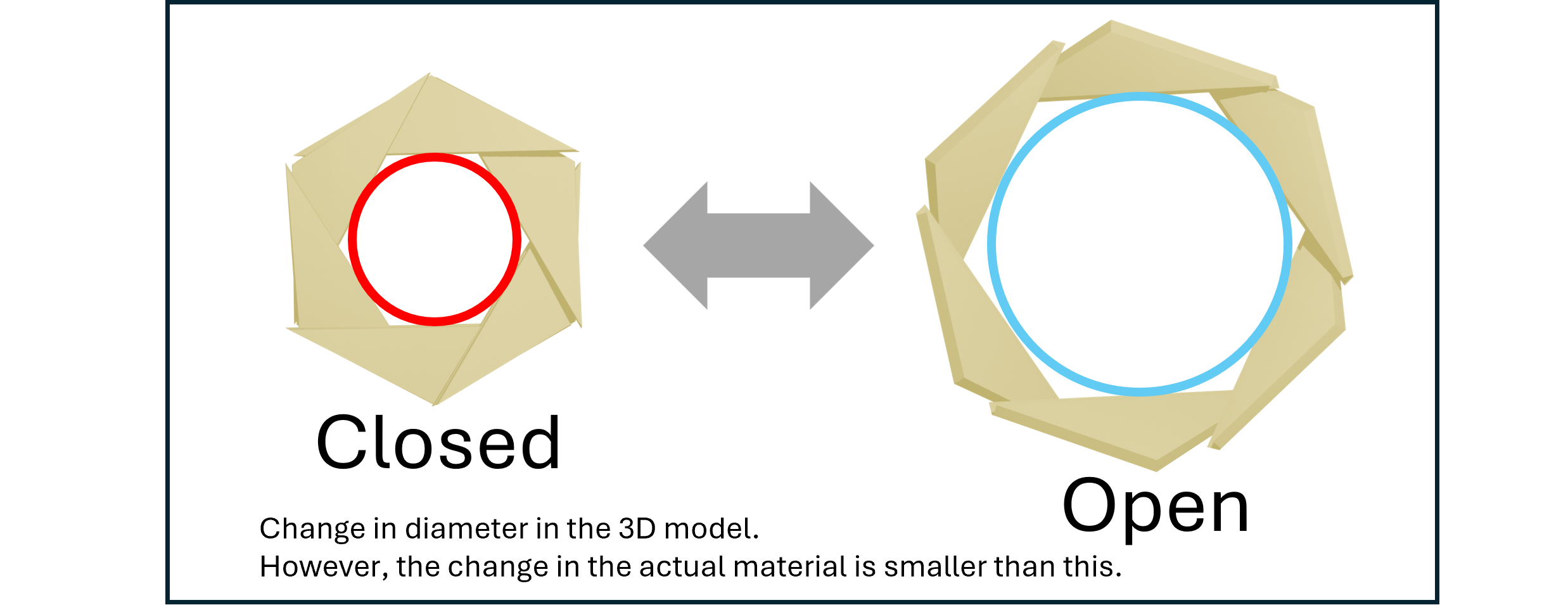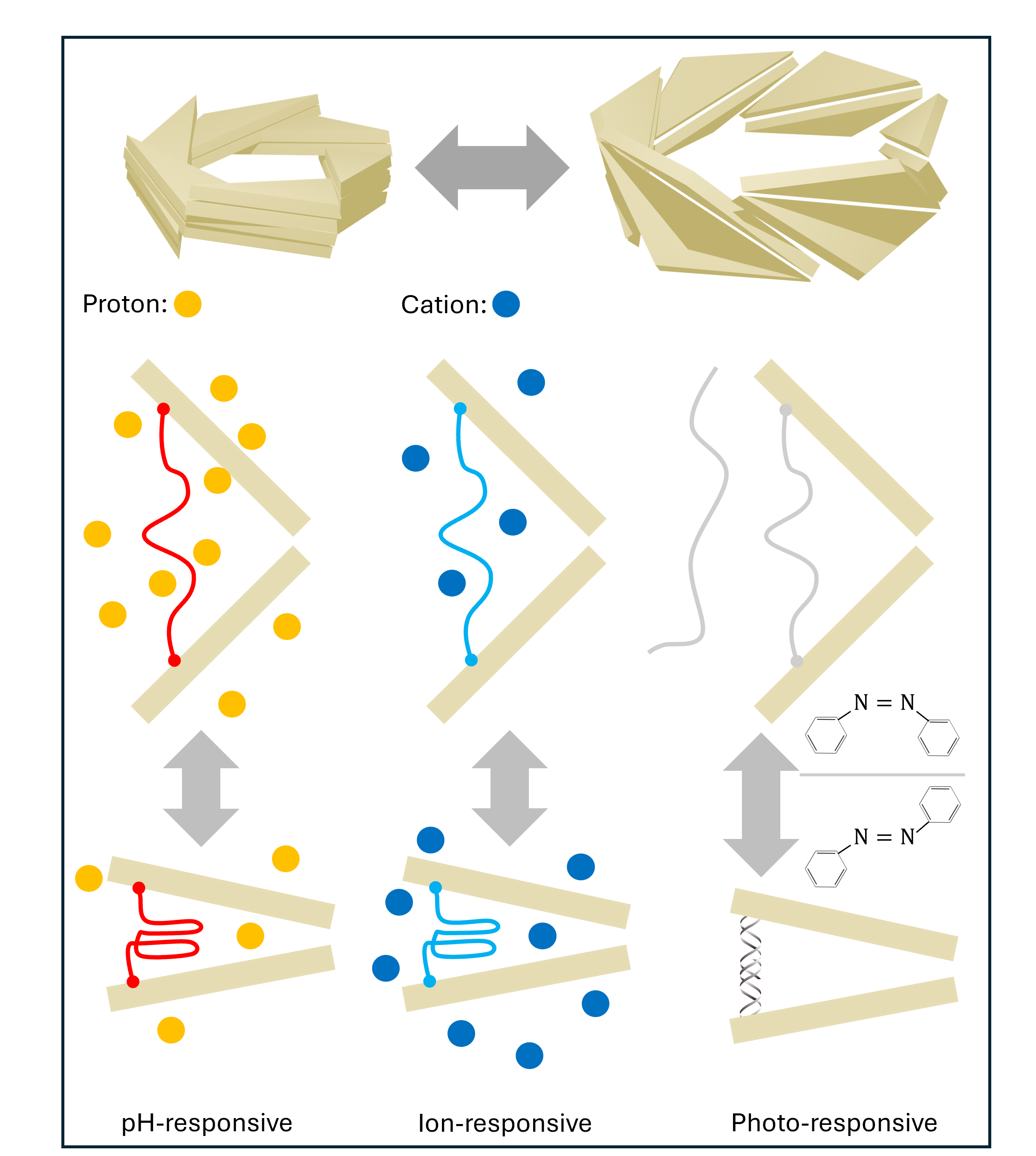
Figure 1. Multi Structure
However, there are problems with this, such as the increase in the
number of control points making the overall control more
complicated, and the increase in connecting parts requiring more
careful design in terms of ensuring the stability of the structure.
Application focused on changes in inside diameter

Figure 2. Change in inner diameter due to structural change
A technical challenge here is the limitation on maximum diameter.
Since the structure size is constrained by DNA origami, expanding
the usable diameter remains an area for further development to
broaden the range of applicable molecule sizes.
Transformations responsive to a variety of stimuli

Figure 3. Trigger Mechanism Applications
One issue with this application is sensitivity as a sensor. With the
current structural transformation mechanism, deformation does not
occur unless all triggers are activated. To increase sensitivity,
further adjustments are necessary, such as miniaturizing the overall
structure and positioning the sensors closer together.